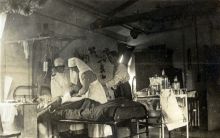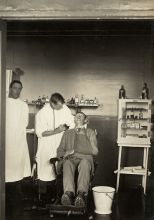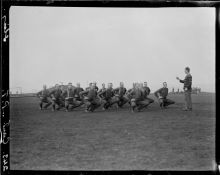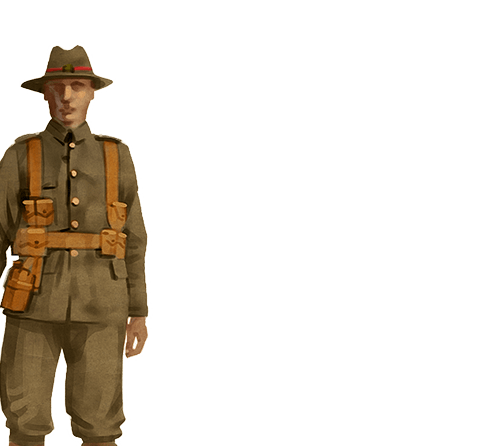Glossary
First World War & military vocabulary
Brockenhurst
Army
An operational unit composed of two or more Army Corps and supporting units, often numbering several hundred thousand men.
Army Corps
An operational unit composed of two or more divisions and supporting units, numbering 30-40,000 men.
Blighty
A British slang word meaning anywhere in the United Kingdom, the term was first used during the Boer War but became commonly known during the First World War. Receiving a ‘Blighty wound’ was a non-fatal injury that enabled a soldier to be sent back to the United Kingdom and was often seen as good luck.
Chlorine gas
Chlorine gas was deployed in large quantities during the First World War by both sides and was used in attacks mainly by the Germans and British throughout 1915. Exposure to chlorine gas caused burning of the throat and eyes, coughing, headaches, intestinal pain, and in severe cases, death. Chlorine gas was extensively used as it was easy to produce and drifted down into trenches and dugouts due to its relative density.
Division
Numbering over 18,000 men, in 1916 the New Zealand Division consisted of 3 infantry brigades, 4 field artillery brigades, a mounted rifles regiment and numerous smaller engineer, signals, medical, labour, logistic, trench mortar and machine gun units. Supporting the Division in a non-combat role was a large administrative and support structure composed of medical, training and administrative units.
Shell shock
Also known as ‘Combat Stress Reaction’ and now referred to as Post Traumatic Stress Disorder (PTSD), shell shock described the symptoms of soldiers who had been exposed to heavy artillery bombardments and combat, although some soldiers suffering from it developed it much later on and away from the battlefield. Symptoms ranged from uncontrollable shaking, sudden mood swings, muteness, deafness, and the inability to eat or sleep.
Shrapnel
Lead bullets contained in artillery shells that, after exploding, were designed to disperse and cause injury and death to infantry.
Thomas Splint
A leg splint that runs from a ring at the hip to past the foot. During the First World War, the Thomas Splint allowed for traction to a fractured leg and created greater ease of movement for transporting wounded soldiers.
Yperite gas
Another name for Mustard gas, as it was used at Ypres, Belgium, during the First World War.



